Installation of the power grid in a combustible material house is associated with certain difficulties. These are mainly related to the selection of cables and the method of their gasket. We tell how to ensure security and at the same time do not make a dissonance in the interior.
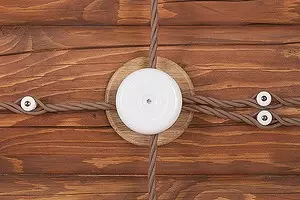
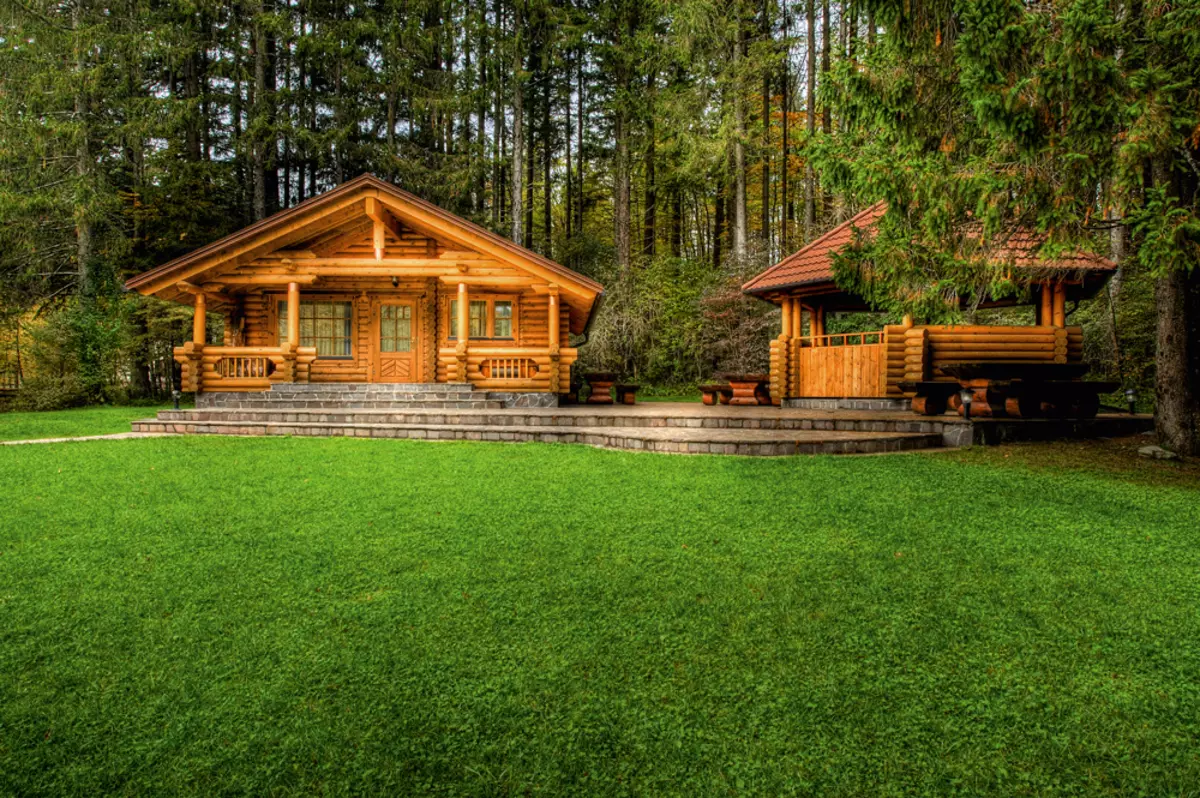
Photo: shutterstock / fotodom.ru
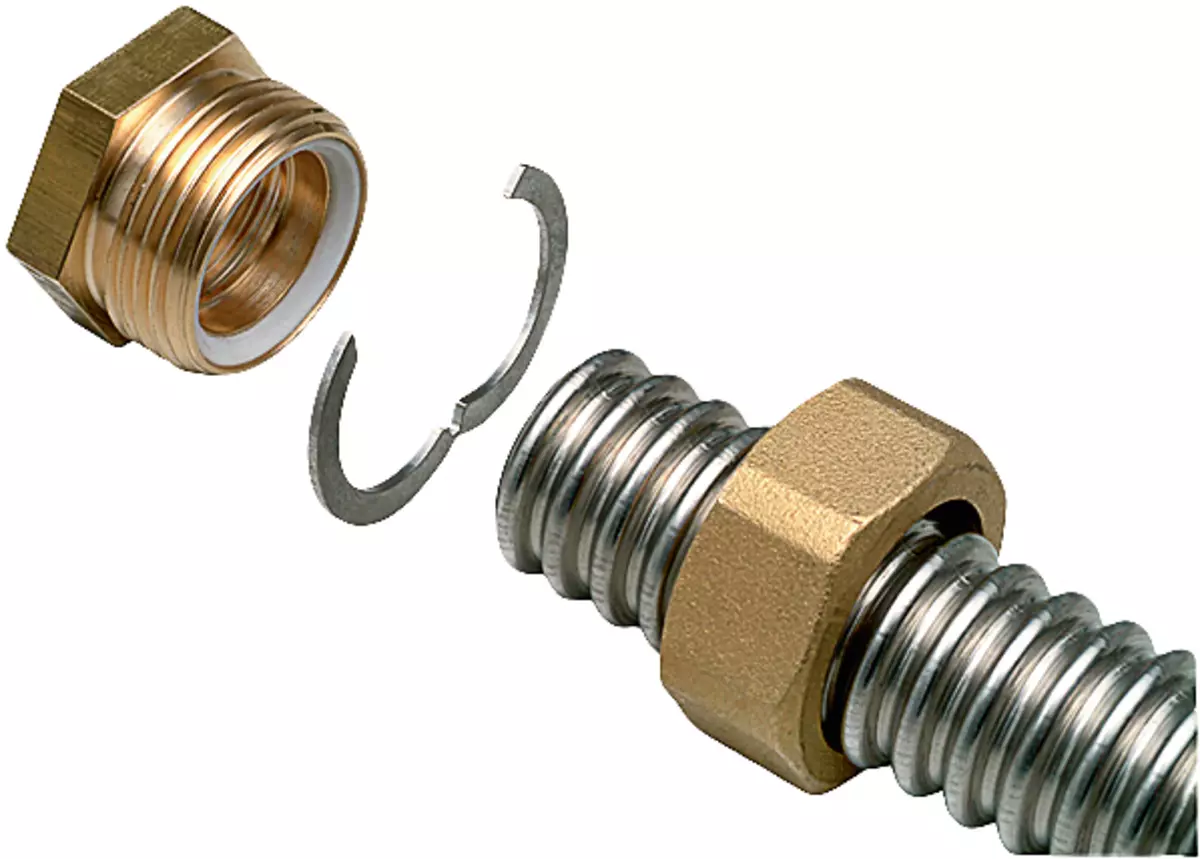
Threaded fitting. PHOTO: "SUP PREVENTION"
The inhabitants of urban apartments are accustomed to the fact that the electrical cables are hidden from the eyes and are reliably protected by concrete structures - it practically does not face damage, and the short circuit due to the fault of the overload and impaired isolation will not lead to ignition. When building a country wooden house, the hosts also seek to board wiring, but there are sluggish problems here. Before discussing them with installers, it is necessary to look into regulatory documents.
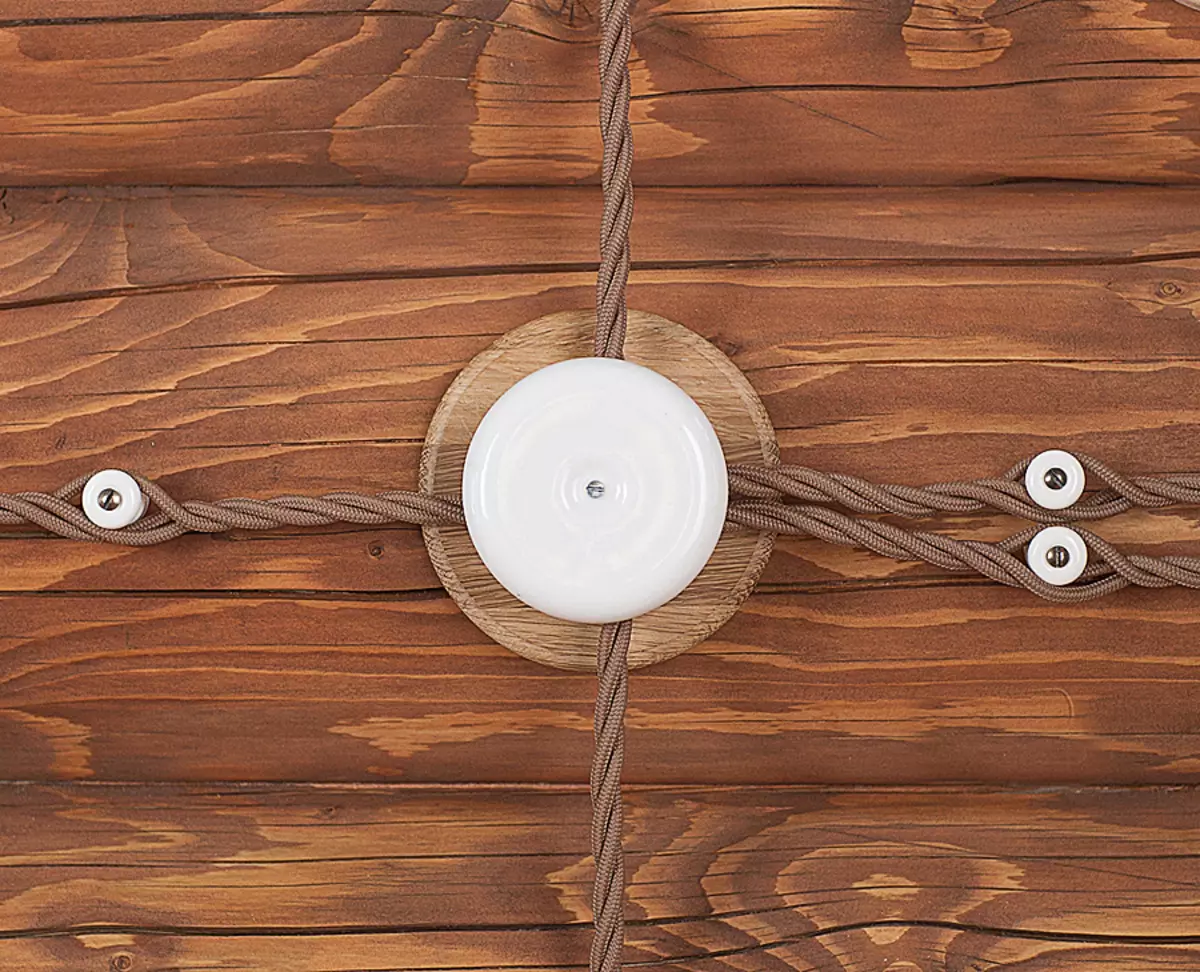
Despite the desire to hide the wiring, easier and safer to lay it openly, using overhead installation products. Photo: Nabrevno.
Standards for laying wiring
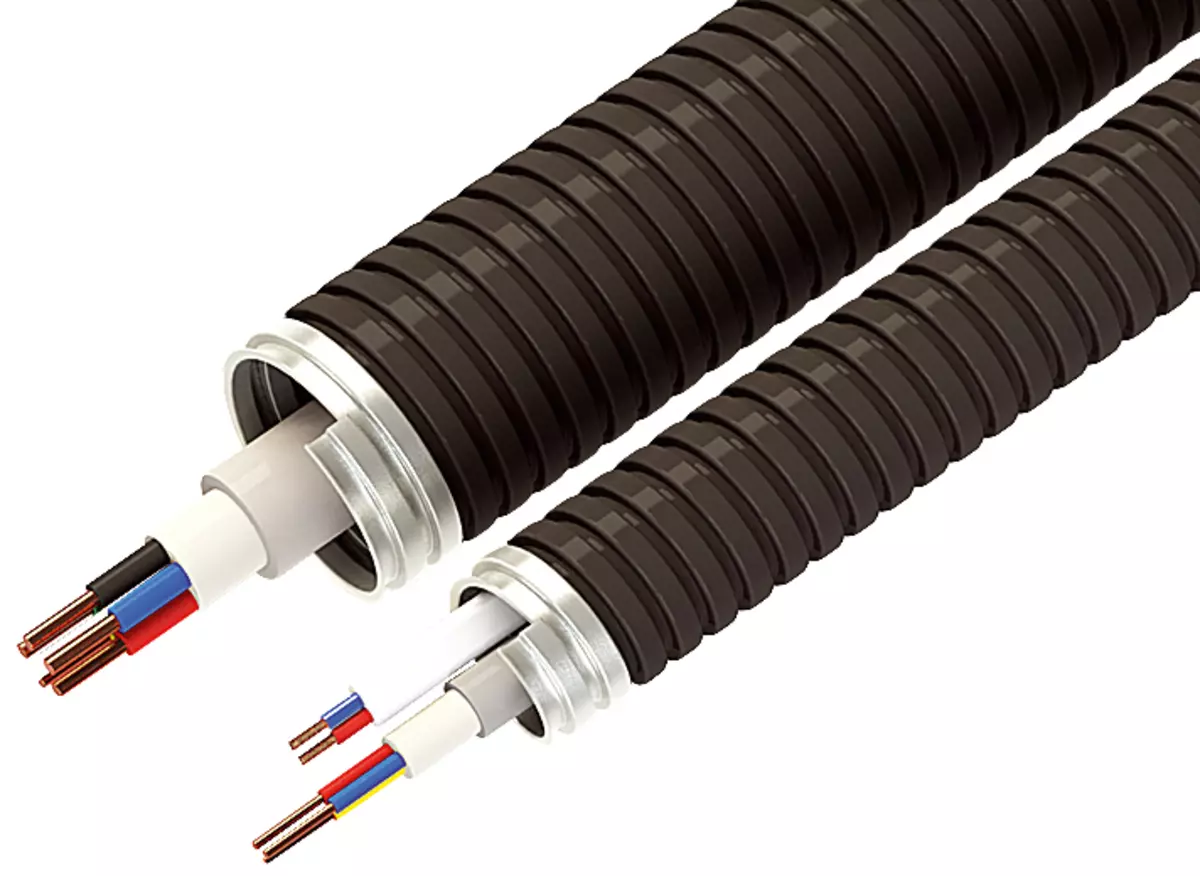
Twisted metalwork. Photo: "Elex"
On construction sites and forums of electrical companies, you can find numerous references to standards (PUE, PPB and PTEEP) without references to specific pages and points of these documents. Correct this situation.
In PUE ("Rules of electrical installations") of the 7th edition of the electrical wiring in wooden houses indirectly concerns paragraph 7.1.38: "Electrical networks deployed for non-voluntary suspended ceilings and in partitions are considered hidden wiring, and they should be performed: behind the ceilings and In the voids of partitions from combustible materials - in metal pipes with localization ability (that is, the ability to withstand without burning a short circuit cable lived. - Ed.), and in closed boxes "(obviously, also metallic. - Ed.). It is worth noting that Pue-7 is not completed and still do not take into account many nuances of the electromotion.
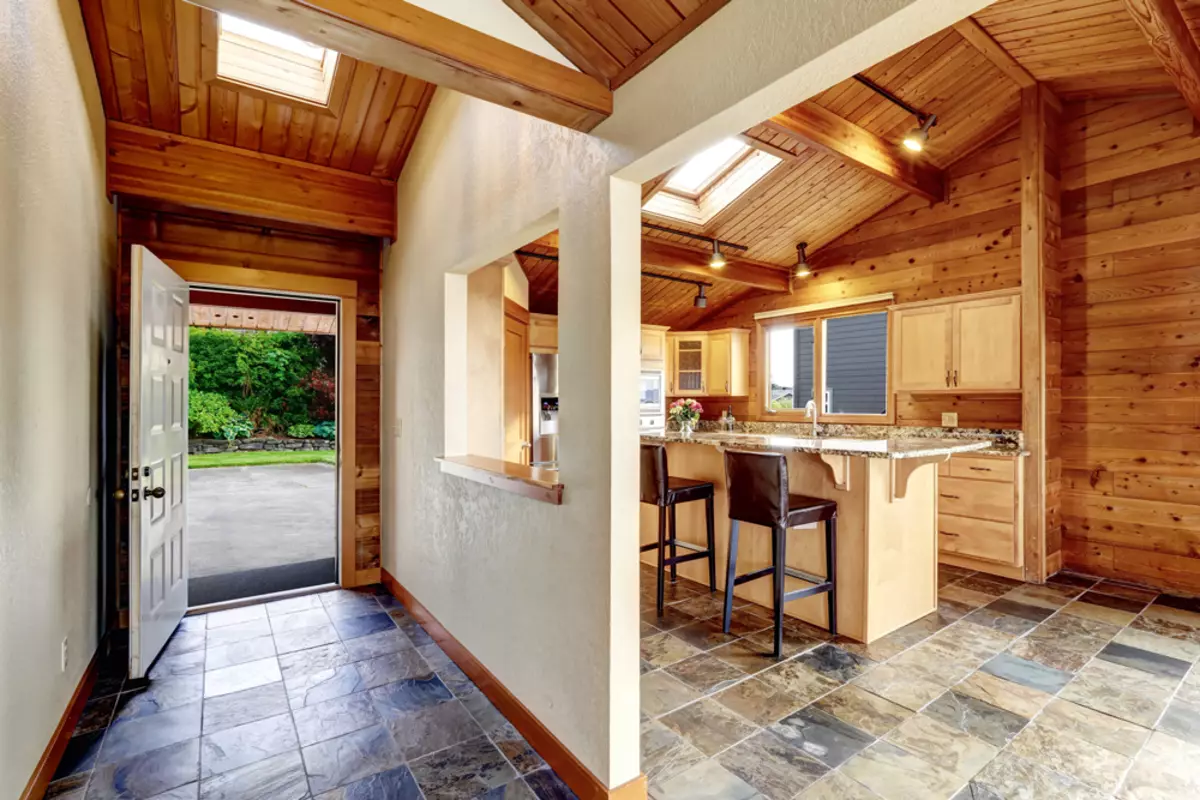
Behind wooden ceilings and trimming it is impossible to lay the cable without protection, as well as in the PVC sleeve. Photo: shutterstock / fotodom.ru
A more detailed guide on the laying of wires and cables can be found in PUE of the 6th publication, which is mainly and guided by practices.
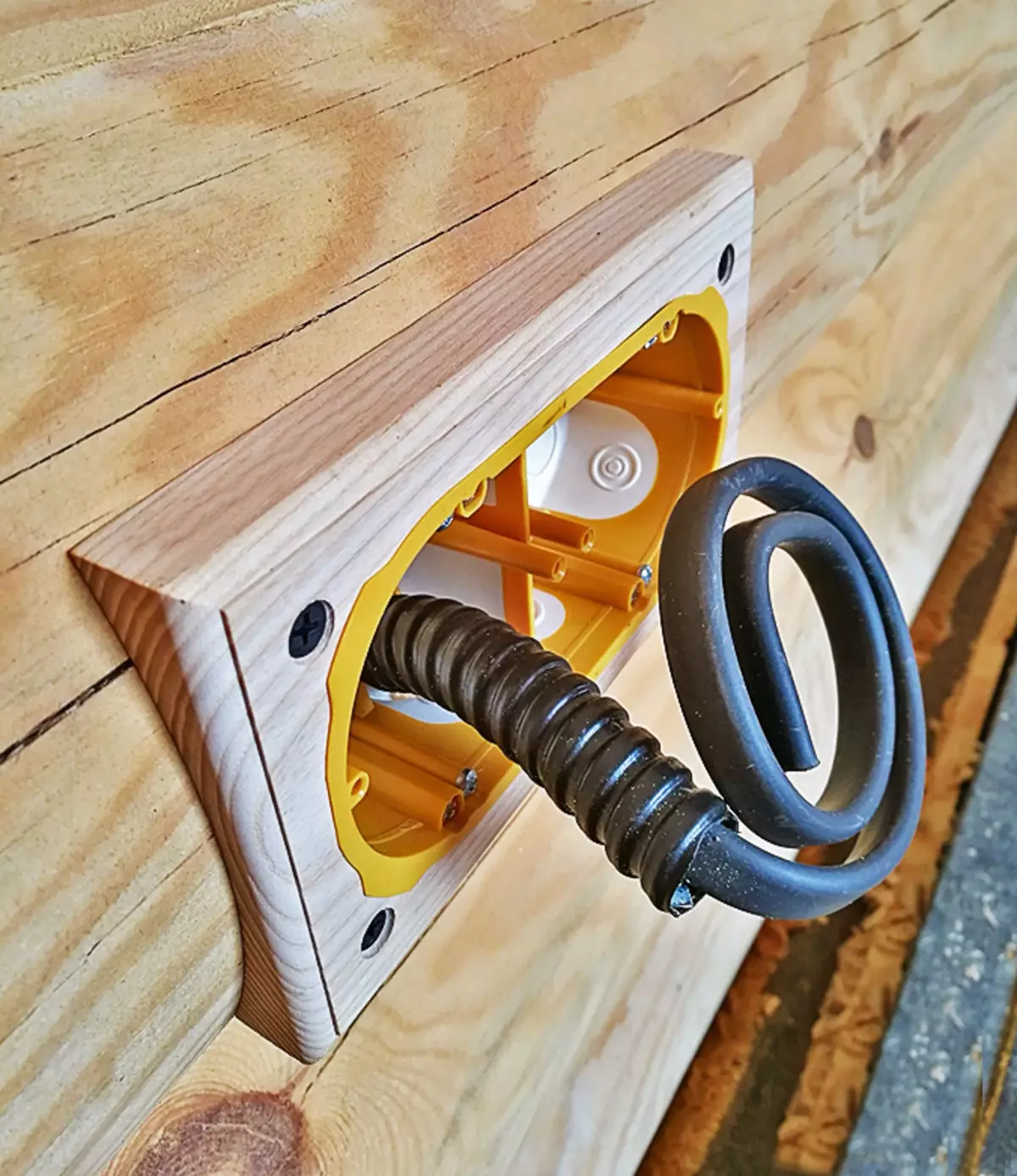
Hidden wiring is performed in the steel tube. Photo: Nabrevno.
Abbreviated version of the table from Chapter 2.1 ("Wiring") of this standard, supplemented by information from some items of the same chapter, we present in the article. It should also be mentioned that paragraph 2.1.23 prescribes to save access to connecting places and branch wires, that is, the junction boxes must be mounted open.
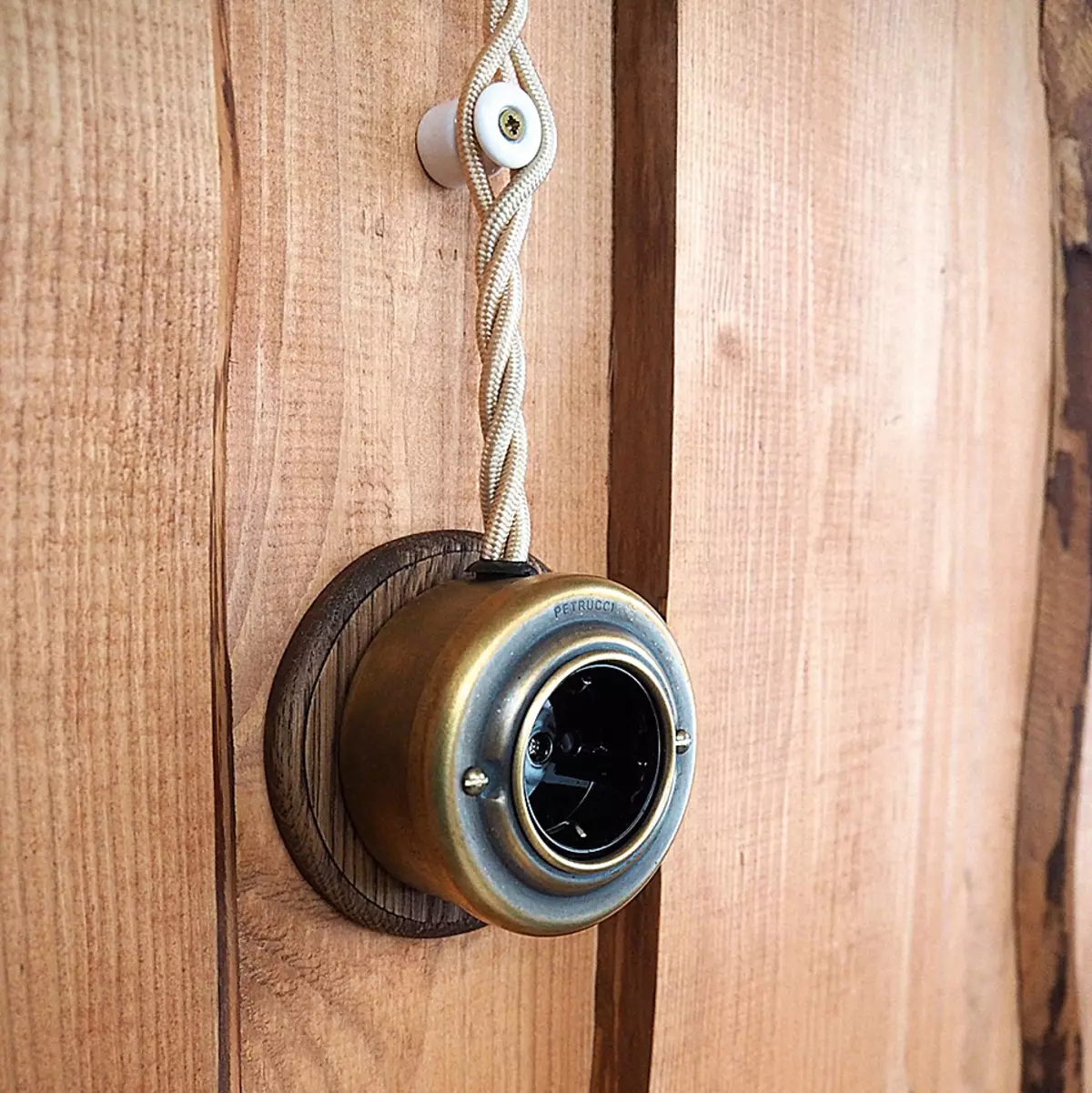
Open - on insulators and in cable channels. Photo: Nabrevno.
In addition, GOST R53315-2009 "Cable products was relatively recently adopted. Fire Safety Requirements ", in section 6 which provides a requirement to use in residential premises cable with VVGng-LS marking (in non-combustible insulation, with low emissions).
Practical implementation
Today, in bruschers and log houses, cables are making three main ways - in hidden metal pipes, on open insulators and in the overhead cable channels. They differ in the appearance of wiring, as well as the value of materials and works.
With any method of laying the cables of the chain, it is necessary to equip machinery and the RCD, carefully calculating the denominations of these devices.
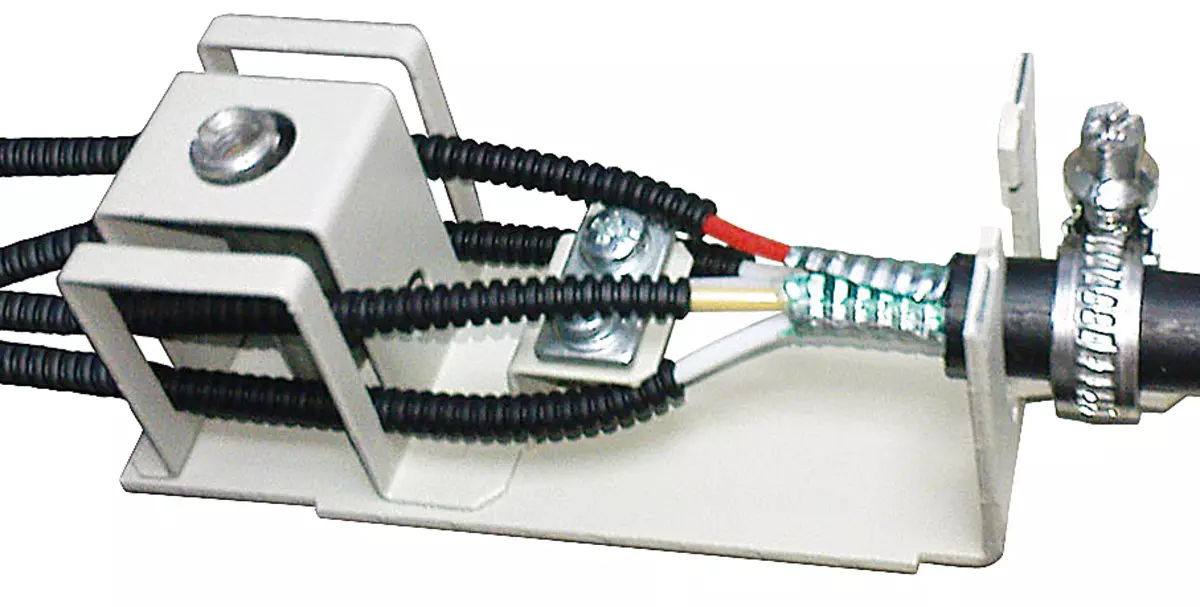
Clamps. Photo: "StroySvyazdetal"
The hidden wiring in steel and copper thick-walled pipes is performed, as a rule, at the stage of gram assembly. This method increases the volume of carpentry work, is carried out in stages to joint efforts of builders and an electrical firm. The task is complicated by the need to take into account the shrinkage of the walls and the possibility of rusting pipes when contact with wet wood. In addition, you have to use special mortise sockets and switches with metal glasses, which at least twice as expensive and often shipped only on request.
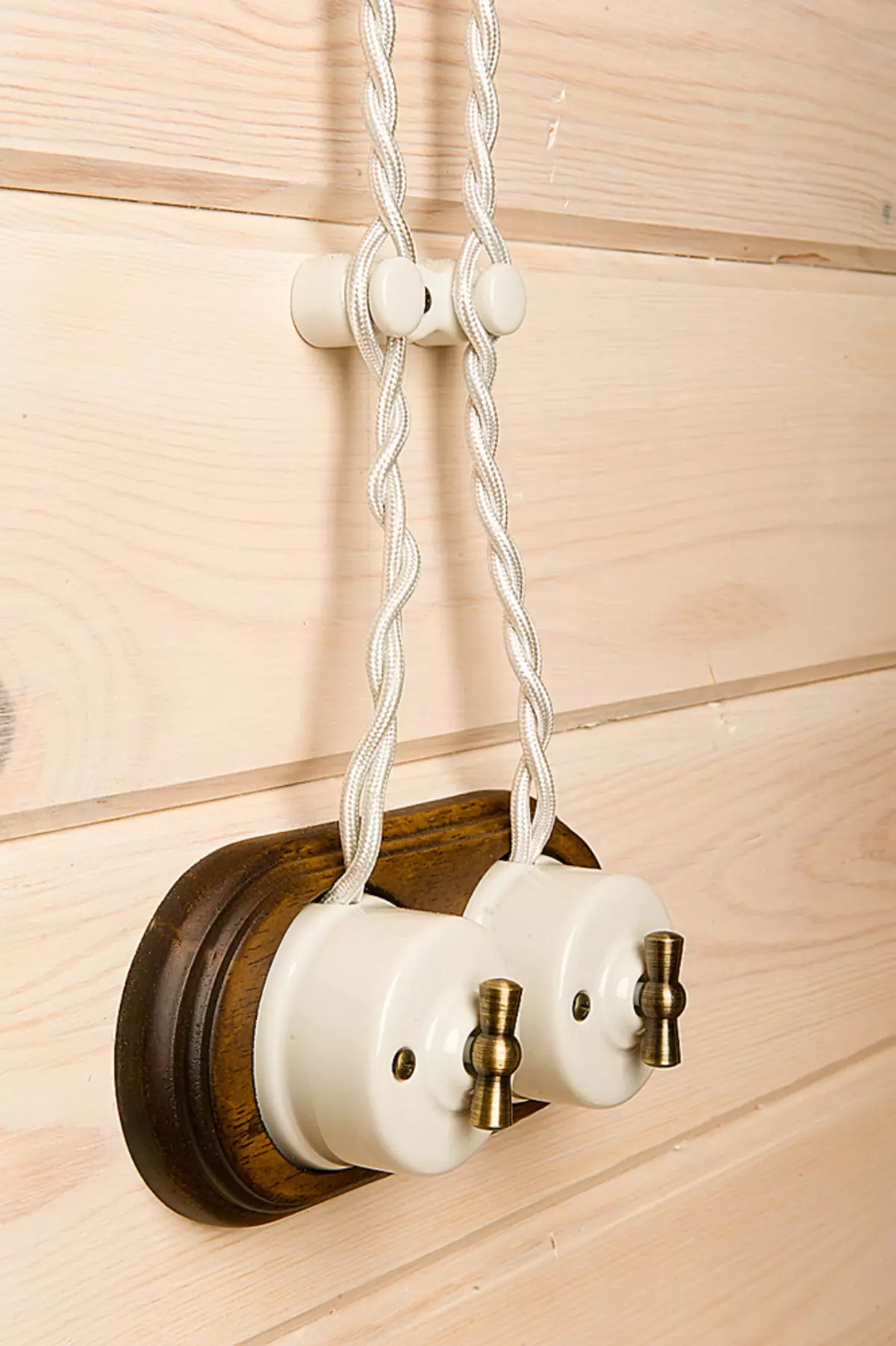
Wires on insulators and switches under the antique are perfectly combined with wooden walls. Photo: Salvador
Open wiring on the insulators is perfectly combined with chopped walls (especially when designing the interior in the classic style and country). Twisted wires (there are several colors) and ceramic glasses-insulators are not at all cheaps, but the costs of them are compensated for simplicity of installation. If you do without stylized stylist sockets and switches, the price of which starts from 1100 rubles, and use conventional overhead products, then the cost of electrical installation will be 2-3 times lower than with a hidden cable laying. In this case, an open network, if necessary, can easily be supplemented with new lines.
The lack of wiring on the insulators is that it is poorly protected from mechanical damage, so it should be mounted at a height of at least 2 m from the floor (clause 2.1.52 Pue-7) and equip all chains in the house of protective shutdown devices (UZO) Leak current no more than 30 mA.
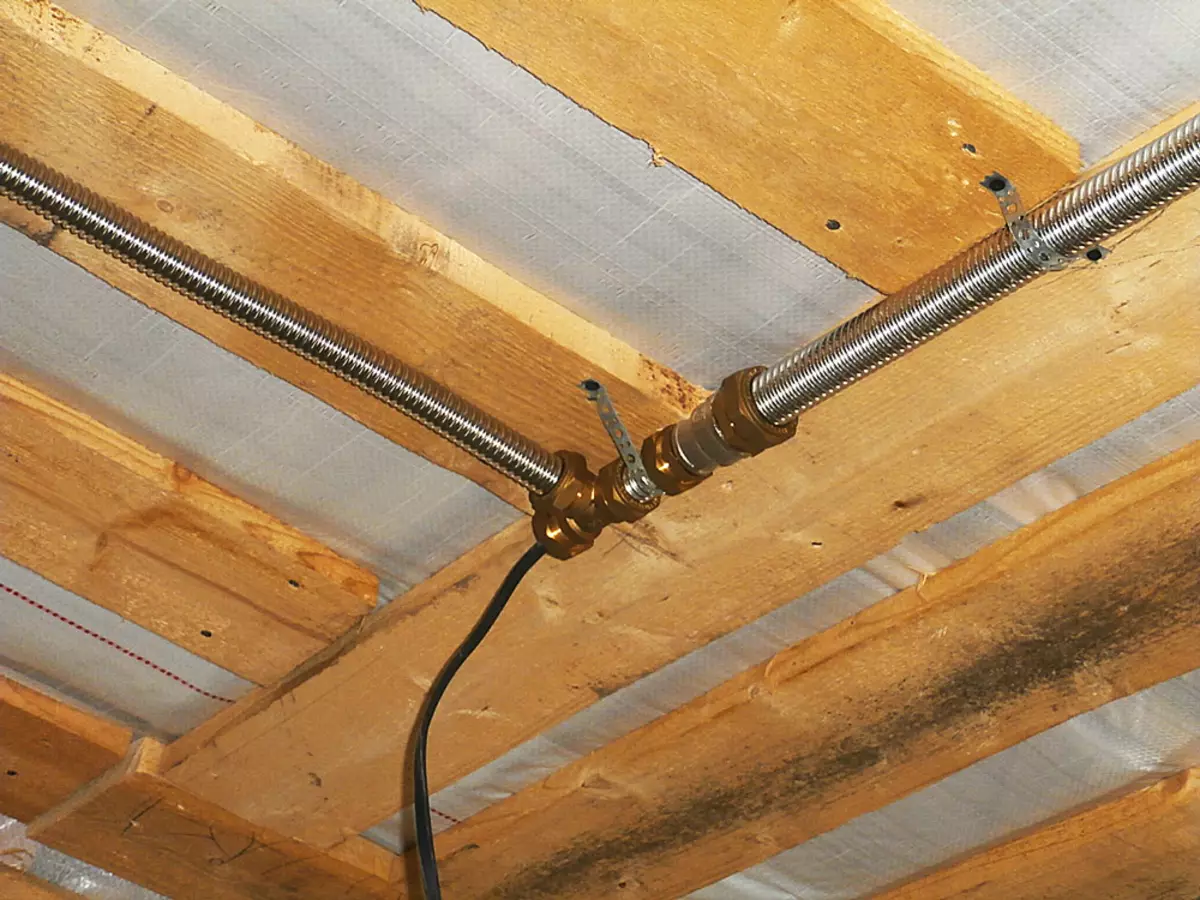
Harprubube, in contrast to the twisted metalwork, can have localization ability and applied in a wooden house. Its connection and fixation should be performed using threaded fittings and clamps. Photo: "Electrogarant"
Open gasket in cable channels. This is the easiest and most affordable option. PVC boxes provide rapid attenuation of the cable with a short circuit and protect it well from external influences. Today, many manufacturers produce a series of wiring products, cable channels and special accessories, which allow for aesthetic and safely perform open wiring in a house from a log or bar.
As for buildings from sip-panels and other "carcases" (which are often also related to the category of wooden houses), it is most safe to conduct the wiring in the thickness of the three-layer inner sewing of the walls performed from plasterboard sheets. At the same time, on the middle layer, stages are made under the cables, thus the latter are separated from the combustible structure with a non-combustible material with a thickness of 10 mm - in full compliance with Pue-6. In the location of mortise sockets and switches, it should be sampled on an enlarged depth and close the combustible insulation, for example, a thick layer of plaster plaster.
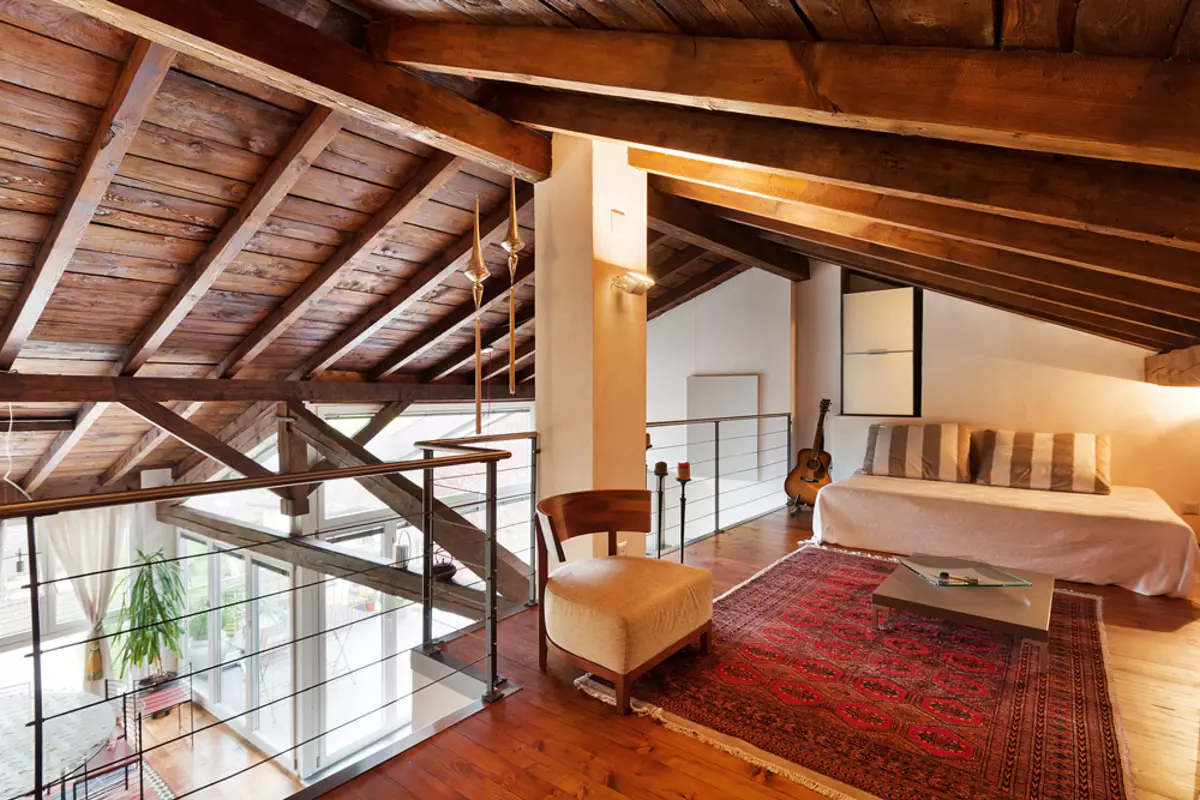
Photo: shutterstock / fotodom.ru
Wireless structures
Significantly simplify the electrical installation in a wooden house and make wiring safer in the fire providing wireless switches and regulators. Among them are single and multi-channel radio tiles and IR sensors operating from the batteries (replacement of batteries required every 5-10 years), devices that converts the power of pressing the radio signal, as well as mobile "devices" to which special programs are installed for Control over a home electrician. Such decisions can be used to manage specific devices or their groups (for example, blinds or lighting) or enter the Smart Home system, which controls the entire electrician in the premises and on the territory of the household site.
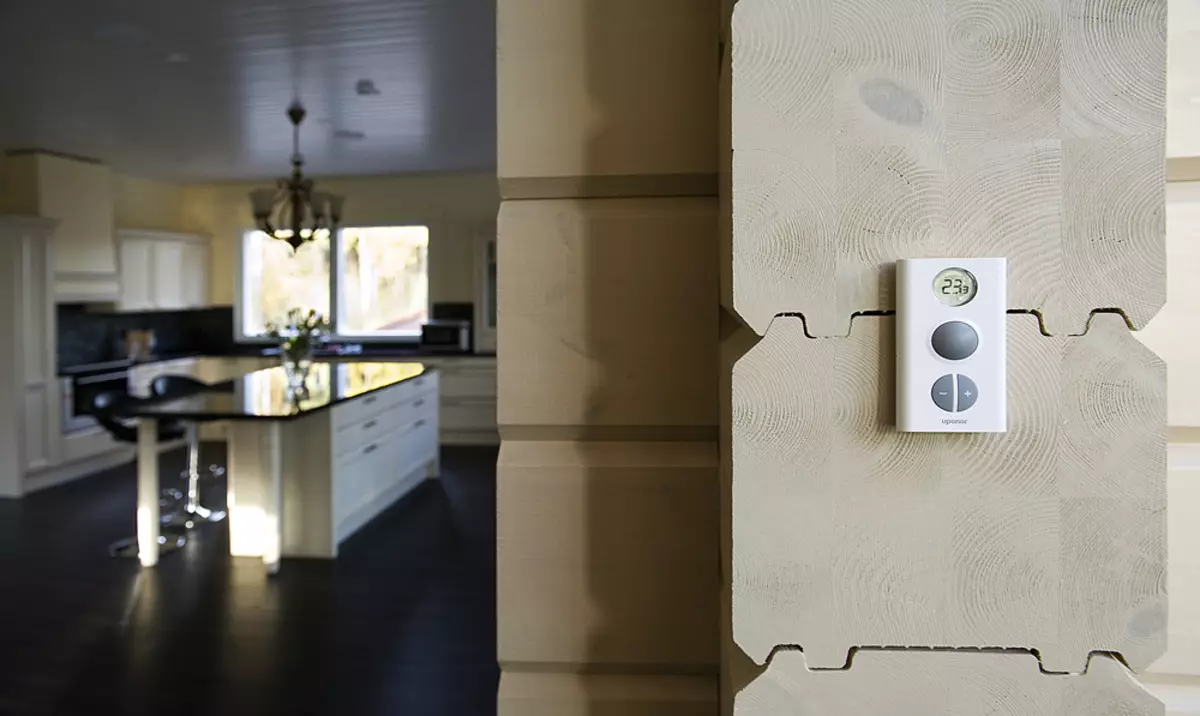
Photo: Uponor
To entrust electrical installation
It is imperative that the wiring in the house is mounted not builders-handymen, but professional electricians familiar with the requirements of standards. They will control the quality of components, calculate the rating of protective devices, collect the shield, is reliably isolate the connections and the installation of electrical installations in accordance with the project.
Neighborhood and contact of electrical wiring should be avoided, even protected, with flammable vapor and waterproofing materials.
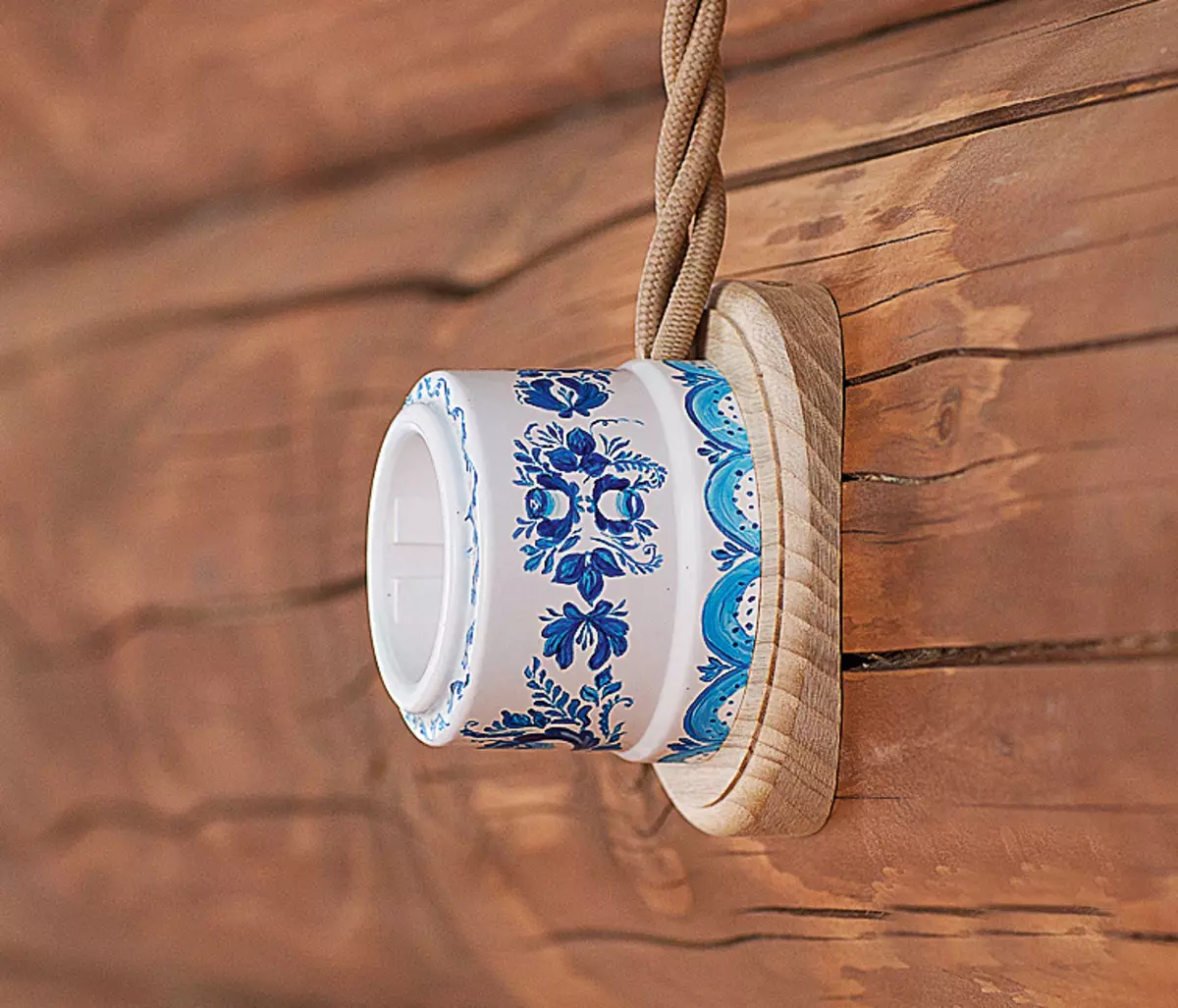
Retro wiring. Photo: Nabrevno.
Selecting a method of laying wires and cables on the grounds and structures from combustible materials under fire safety conditions (according to Pue-6)
| Wire or cable type | View of wiring and laying method | |
| Open electrical wiring | Unprotected wires; Protected wires * and cables in the shell of combustible materials | On rollers, insulators ** or with a lining of non-aggravated materials *** |
| Protected wires and cables in the shell of non-aggravated and employment materials | Directly on the surface | |
| Unprotected and protected wires and cables in the shell of combustible, hard-forable materials | In pipes and bones from non-aggravated materials | |
| Hidden electrical wiring | Unprotected wires; Protected wires and cables in the shell of combustible materials | With lining of non-aggravated materials and subsequent plastering or protection from all sides with a solid layer of other non-aggravated materials |
| Protected wires and cables in the shell of employment materials | With a lining of non-aggravated materials | |
| The same of non-aggravated | Directly on the surface | |
| Unprotected wires and cables in the shell of combustible, employment and non-aggravated materials | In pipes and bones of hard-growing materials - with a lining of non-aggravated materials and subsequent shockting; in pipes and bones from non-aggravated materials - directly |
* Unprotected - wires that have no shell over electrical insulation of conductors (stamps Apr., PRD, etc.). Protected - wires having over the insulation of conductors a hermetic shell (Stami Apr, PTS, etc.).
** At a distance of at least 10 mm from the combustible design. At the same time, in places of passage of walls and overlap wires, the insulating pipe must be additionally protected (p. 2.1. 59 PUE).
*** Lining from non-aggravated materials should perform on each side of the wire, cable, pipes or box at least 10 mm. (When laying in closed niches and voids, for example, between the facing and wall, the pipes and the box, it should be separated from all sides of the combined structures with a layer of non-controlled material with a thickness of at least 10 mm - p. 2.1.40.)

